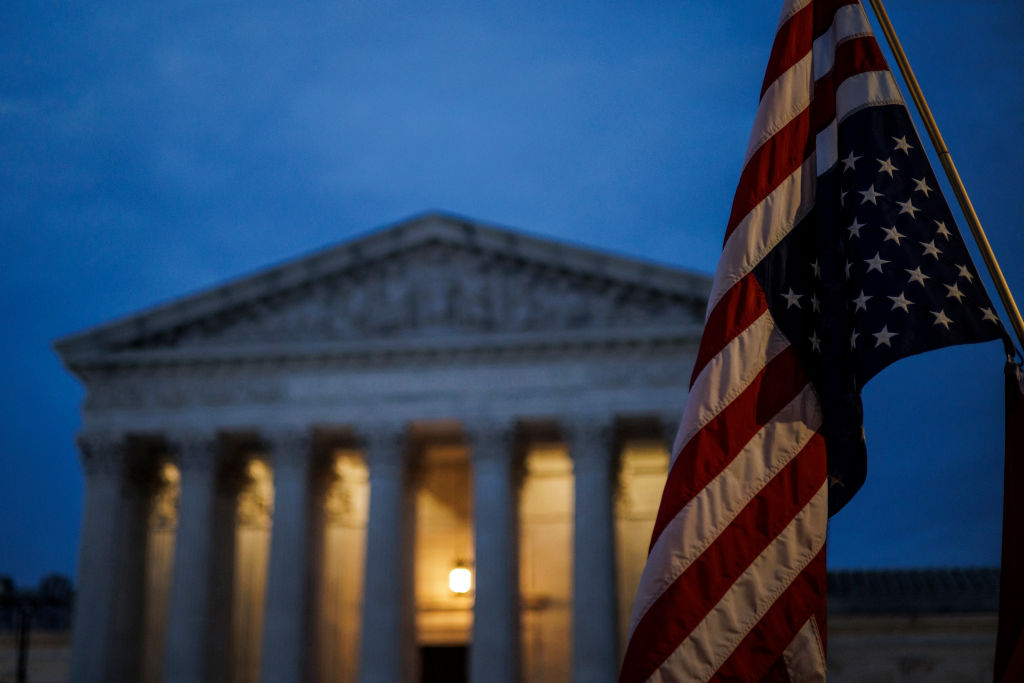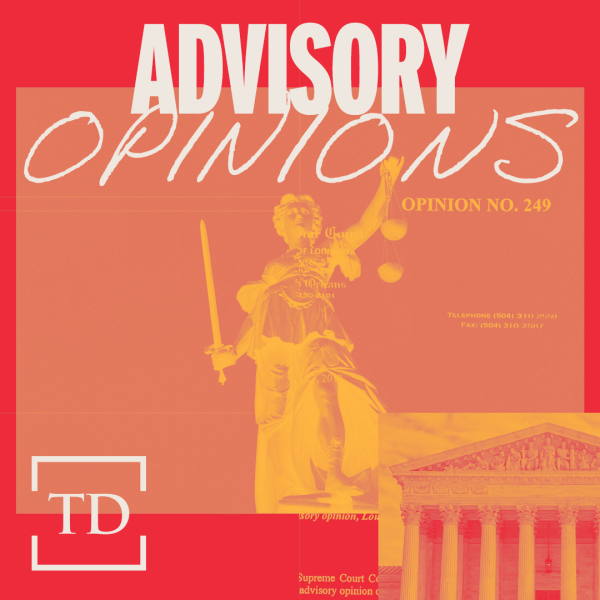Dear Reader (even you cheeseheads trying to get blazed at the Wisconsin Capitol),
Before we get started, a point of personal privilege. Just shy of a decade ago, Donald Trump accused me of not knowing how to buy pants. It became a whole thing. National Review even tried to raise money to buy me pants. Total strangers would come up to me and ask, “How did you get those pants?”; “Who helped you get those pants?”; “Do you need some new pants?” If you’ve never experienced such a thing, I can tell you it elicits a certain uncertainty about your career choices.
As I’ve had to explain many times now, I do in fact know how to buy pants. I wouldn’t say it’s one of my great strengths. If asked in a job interview, “What special skills would you bring?” I wouldn’t lead with my exemplary proficiency at pants-procurement. At the same time, my wife has never gotten a call from the manager at Home Depot asking for her to come get her husband. “He’s in the power tools section looking for pants again, Mrs. Goldberg.”
Anyway, I bring this up, because—as countless people have pointed out to me over the last day or so—it seems that Donald Trump believes that his pants-skills are a source of his comparative advantage over lesser mortals. Not just purchasing pants, but the full pants package. Apparently, people marvel at his ability to get pants on, “How do you do it?” people ask him.
“I’ll explain it to you someday,” he tells them.
Perhaps in the next Trump administration, we’ll get the Pants Czar we never knew we needed.
Okay, let’s move on.
Flagging hysteria.
I’ll be honest, I don’t know what to make of the explosion of SOV sweeping through the chattering classes. In case you didn’t already know the term I just made up, that stands for Sudden Onset Vexillology. Vexillology, in case you’re not a Big Bang Theory fan, is the study of flags.
I don’t want to spend a lot of time on the flag issue, per se, but a little context and scorekeeping seems necessary. Justice Samuel Alito—and his wife—are caught in a crossfire between vexillologists from all directions. This all started when the New York Times reported that shortly after January 6, the American flag outside the Alitos’ home was hung upside down. The upside-down Stars-and-Stripes is a long-recognized symbol of distress. If you have pirates on your ship or a hole in your hull, you should fly your flag upside down to signal you’re in very serious trouble. Apparently, some of the January 6 rioters and other MAGA radical types have adopted this as a kind of insignia of their movement: “The country is sinking!”
(According to reports, Mrs. Alito hung the American flag upside down as a middle finger to a really awful neighbor. More on that in a moment.)
The Times and many of Alito’s harshest critics are convinced that Justice Alito knew this and was telegraphing his solidarity with such people. But given that Justice Alito says it was his wife who displayed the flag upside down without his knowledge, some will concede the possibility that it is Mrs. Alito who has gone full MAGA. The controversy seemed poised to start dying down when the Times followed up with another report: The Alitos flew a “Pine Tree Flag” outside their vacation home. Despite being a venerable banner going back to George Washington (his secretary designed it) that was, until 1971, the official maritime flag of Massachusetts, we are told it too is a symbol of the MAGA-aligned Christian nationalist right. As a result, the controversy has gone back to 11.
I think most of Alito’s defenders concede, with varying degrees of reluctance or enthusiasm, that hanging the flag upside-down was a mistake, regardless of the motivations behind the decision. As for the Pine Tree Flag, the defenders concede nothing to the detractors. This, they argue, is little more than artificially ginned up and wholly unjustified outrage. “The Flag Furor Is an Appeal to Stupidity” read the headline of a piece written by my friend and former National Review colleague Charlie Cooke.
If this brouhaha were solely about the Pine Tree Flag, I’d be squarely with Charlie et al. It’s been floating around in conservative, patriotic, vexillogical, and Christian circles for quite a while—Ron Swanson keeps one on his desk in Parks and Recreation. Leaping to the conclusion that this proves Alito has become a MAGA radical loyal to Trump and not the law seems like the dot-connecting equivalent of trying to leap a canyon in two jumps—particularly when Alito has provided scant evidence from the bench he’s anything of the sort.
Still, hanging the American flag upside down was legitimately weird. It was also inappropriate, whatever the motivation, for it to be flown outside a Supreme Court justice’s home. Think about it this way: If the Alitos hadn’t done it in the first place, no one would be talking about it (that’s how Earth-logic works). It’s fine to argue that critics are overreacting, but justices should not provide opportunities for such overreaction. (On Advisory Opinions, Sarah Isgur offered a very instructive list of Democrat-appointed judges and justices making political mistakes that didn’t receive nearly as much scrutiny).
In short, I don’t think there are enough facts to support sweeping conclusions one way or another. But that hasn’t stopped many people from offering sweeping conclusions. A sure sign that there’s a lot of political opportunism hiding in mufti within the political hysteria is that this brouhaha has reignited calls to pack the Supreme Court. “Justice Alito must recuse himself from anything related to the January 6th insurrection and we must expand the Court to ensure that Donald Trump’s stolen seats don’t dismantle our democracy,” Sen. Ed Markey declared.
I think that’s nonsense. But let’s widen the lens.
The paranoid style of the center.
Jesse Walker makes a really interesting point in his book The United States of Paranoia: A Conspiracy Theory. The standard egghead narrative—foisted on the chattering classes by Richard Hofstadter in “The Paranoid Style in American Politics”—is that paranoia and conspiracy theorizing is primarily, even exclusively, a feature of zealots, particularly right-wing zealots, at the margins of politics and society. It’s absolutely true that the right-wing fringe is full of conspiratorial nonsense. It’s also true that the left-wing fringe is full of conspiratorial nonsense, but academia and elite journalists rarely shine a light on it the way they do with right-wing craziness. But, Walker notes, the people who get a total pass from this hand-wringing reside in the center. Walker writes:
Pundits tend to write off political paranoia as a feature of the fringe, a disorder that occasionally flares up until the sober center can put out the flames. They’re wrong. The fear of conspiracies has been a potent force across the political spectrum, from the colonial era to the present, in the establishment as well as at the extremes.
A few pages later he adds:
You wouldn’t guess it from reading “The Paranoid Style,” but the center sometimes embraces en masse ideas that are no less paranoid than the views of the fringe.
Walker argues that when “the center” is freaked out by a conspiracy theory, we don’t call it a conspiracy theory. We don’t really call it anything in the heat of the moment. But later, when we realize that people kind of lost their minds, we retrospectively call it a “moral panic.” There have been countless moral panics. In my lifetime, elites freaked out over Alar on apples, Dungeons & Dragons (the game, not the dank chambers or magical monsters), Y2K, video games, the tea parties, book “banning,” and child-abusing satanic cults. A little before my time, there were moral panics over things like hitchhiking, comic books, and rock ‘n’ roll.
Sometimes ideological bias colors what gets called a moral panic. Lefty historians like to describe the Red Scares of World War I and the 1950s as moral panics, but the Brown Scare of the 1940s was just a reasonable concern about fascists in our midst. Don’t get me wrong, there was a lot of moral panic in both Red Scares, and there was reason to be concerned during the Brown Scare. But sometimes we use the phrase “moral panic” to delegitimize all reasonable concerns. Communist infiltration and influence in America was a real threat, even if I’m perfectly happy to concede there were unjustified excesses.
Or think of it this way. People in power are often more paranoid and conspiratorial than people out of power. (Nixon saw conspiracies everywhere; so did Hillary Clinton.) This isn’t just an American thing. Stalin and Hitler based their whole worldviews on paranoid conspiracy theories. Early modern England was shot through with conspiracy theories about the Catholic Church and Catholic Spain. It was a moral panic, to be sure. It was also based on the fact that the pope and the Spanish were very hostile to newly Protestant England.
In other words, moral panics are, more often than not, exaggerated responses to real things. The “Black Lives Matter” and George Floyd protests were, by my lights, an obvious example of an elite moral panic. But that doesn’t mean there was nothing to get upset about. My libertarian friends like to call various iterations of the Drug War or illegal immigration moral panics. They often have a point about the excesses, but I think they’re usually wrong to say that the hysteria is baseless. There’s often a base, even if the hysteria goes overboard.
Dueling panics.
Or take the most relevant example for the present moment: The elite moral panic over Donald Trump—and Joe Biden.
I think I have demonstrated my bona fides as an anti-Trump dude (the pants thing alone tells the tale). But I am perfectly willing to concede that Donald Trump has elicited a protracted freakout in many quarters of politics, academia, and journalism. For Trump’s staunchest defenders, it’s all unjustified. For Trump’s harshest critics, it’s barely sufficient.
If forced to choose, I am closer to the critics than the defenders. But no one is forcing me to choose, so I will plant my feet and get crap from both directions. For instance, I think the hush money case against Trump is a profound error. Oh, I think he’s guilty of the stuff—the affair, the payoff, the false accounting, etc.—but I also think the claim that this amounts to a felony is weak on the facts and the law. But I also think the Trumpist claim that this is outrageous, banana republic-style election interference orchestrated by the Biden administration—never mind, a Stalinist “show trial”—is nonsense.
Consider the neighbor who reportedly ignited Flag-gate. He had a “F— Trump” sign in front of his house, some 50 feet from where neighborhood kids wait for the school bus. When asked to take it down, he called Mrs. Alito a “c—t” and blamed her for January 6. Even if you think Mrs. Alito’s response is crazy, it’s worth bearing in mind that her neighbor is crazy too. If this was during the Red Scare, this would be like calling Dean Acheson’s wife a “c—t” and blaming her for the Chinese invasion of South Korea. Heck, that’s unfair to the Alitos, because there was at least good reason—later proved false—that Acheson had unintentionally encouraged Stalin and Mao to invade. How on earth is Justice Alito—never mind Mrs. Alito—responsible for January 6?
It says something that there’s been virtually no journalistic curiosity about this neighbor. I can think of good—and bad!—explanations for that, but I think it is beyond obvious that if there was a confrontation in which a right-wing neighbor spewed conspiratorial and gross nonsense at a liberal Supreme Court justice or their spouse, we’d know that neighbor’s name. MSNBC would run whole segments on the neighbor’s troubling associations and radical views.
This story is a good stand-in for the broader dynamic. A Supreme Court justice and his wife are, by any conventional understanding, members of the elite. Socioeconomically, I think it’s a fair guess that their neighbor is a member of the elite too. So here we have a politically deranged individual triggering political derangement in another. Thinking Mrs. Alito is responsible for January 6—or simply calling her a “c—t” for objecting to his sign—is politically deranged. Hanging a flag upside down in response is politically deranged. It’s our politics in miniature. Again, I don’t know who the neighbor is, but I’d hardly be shocked if he was a prominent Democratic lawyer, executive at some liberal NGO, or a producer at MSNBC—because they are the sorts of people who would behave this way.
But you can sense from the coverage and Alito criticism that all of the troubling behavior is from the Alitos. Little thought is given to the fact that crazy begets crazy.
This week the MAGA right, at Trump’s urging, convinced itself that Joe Biden tried to assassinate Trump during the FBI search of Mar-a-Lago (read Mike Warren’s full account of all that here). Also this week, Joe Biden spewed a farrago of falsehoods and insisted that the forces of reaction and racism were surging (under his presidency). He took a stupid amateur meme seriously that suggested Trump wanted to deliver a “unified Reich” when elected. I could list more examples all day long.
(I should note, by the way, that MAGA outrage over Biden’s (utterly fictitious) attempt to use the FBI to assassinate Trump is particularly hilarious, given that Trump and his lawyers have floated the idea that presidents who assassinate a political opponent should be immune to political prosecution. If they really believe that, what’s all the whining about? Ordering the FBI—or Seal Team Six—to take out Trump would be an official act, after all.)
I’m not trying to make a false equivalence. I think Trump’s behavior is far worse than Biden’s. MAGA’s conspiratorial mindset is more pronounced and dangerous. But Biden’s behavior is more mainstream. He’s the president. His defenders and surrogates control the commanding heights of media, academia, and entertainment.
Trumpworld, including plenty of elite Republican politicians and pundits, have embraced the view that America cannot survive another Biden term. Bill Barr and Nikki Haley have stated plainly and persuasively that Trump is unfit and would be a ruinous president. But they’ve endorsed Trump anyway. Meanwhile, Bidenworld—which includes the denizens of those commanding heights—insists democracy will end with another Trump presidency. Neither claim is baseless. But both claims are suffused with moral panic. I can already anticipate the feedback I will get from people on one side or the other insisting that I am only half-right; my side is right to be panicked.
The point I’m trying to make is that political derangement is dialectical. I should also note that the anti-Trump hysterics are to some extent helping Trump. The more they shed decency and norms while railing about Trump’s rejection of decency and norms, the more they ratify his worldview. He wants you to think all the rules are B.S., mere facades designed to keep the Deep State or the “Marxists and Fascists” in power. He wants you to think that decency and decorum are for suckers, because that makes his indecency and crudeness seem honest and authentic. If the current “regime” is corrupt, undemocratic, and authoritarian, then the choice isn’t between democracy and authoritarianism; it’s between their authoritarianism and ours. And, I regret to tell you, if that’s the contest, Trump will win (I hate and reject that choice, but the Remnant is not a voting bloc anyone cares about these days). In a contest between frail and vacillating authoritarianism and confident and strong authoritarianism, the strong and confident will most likely prevail.
I don’t think Biden is an authoritarian—his indefensible use of executive orders notwithstanding—but he’s failing at convincing people that this isn’t the choice. He’s lost the ability to defend and exude a sense of normalcy. He’s leaning into a left-wing moral panic in hopes that it’s less terrifying than a right-wing moral panic. I think he’s got the better argument, but he’s a terrible salesman for it.
When the center does not hold, it’s because the centrifugal forces of paranoia make the sane feel crazy. I know many Dispatch readers understand what I’m talking about. The need to be on a team is a powerful human compulsion. What Ramesh Ponnuru calls the “lure of binarism” is a siren song. It’s not just a left-right thing, though when the left and right have largely self-sorted into competing moral panics, staying calm and sticking to the facts is seen as a kind of treason to both left and right. They insist that you must share our hysteria or be held responsible for the things we’re hysterical about. And, you’re a c—t, too.
Canine Update:
The other morning, we got up extra early. This was in part because Gracie has taken to jumping on my bed at the first hint of sunlight or birdsong, and shouting “MEOW” at me. Once I start moving, the dogs read this as “go time”; falling back to sleep is a dereliction of duty and no longer an option. So anyway, around 5:50 a.m. we went out the front door and spotted a fox on our front lawn, looking at us like we were the ones at fault. I don’t know what it is about foxes that sets Zoë off, but whatever it is, it’s deeply primal. Maybe it’s that foxes are near relatives, who in the primordial past rejected the choice made by her ancestors to sign a mutual defense pact with the humans. The Gurkhas were the bravest and best fighters in the British empire, and Zoë believes the Dingos should play the same role. Or maybe it’s just because Zoë cannot abide any canine on her turf who does not first file for the required permits. Or perhaps because foxes are nocturnal and Zoë believes she rules the day (that’s what she told Pippa). Whatever the reason, Zoë tore off after this fox. There was no way she was going to close the distance and the interloper escaped. Afterward, Zoë insisted on peeing on every single spot she even suspected was tainted by fox spore. Oh, and Pippa barked some encouragement. Speaking of Pippa, she’s had a really great week, playing hard and sleeping harder. The only downside is that Zoë is redoubling her policy of Dingospreading.









Please note that we at The Dispatch hold ourselves, our work, and our commenters to a higher standard than other places on the internet. We welcome comments that foster genuine debate or discussion—including comments critical of us or our work—but responses that include ad hominem attacks on fellow Dispatch members or are intended to stoke fear and anger may be moderated.